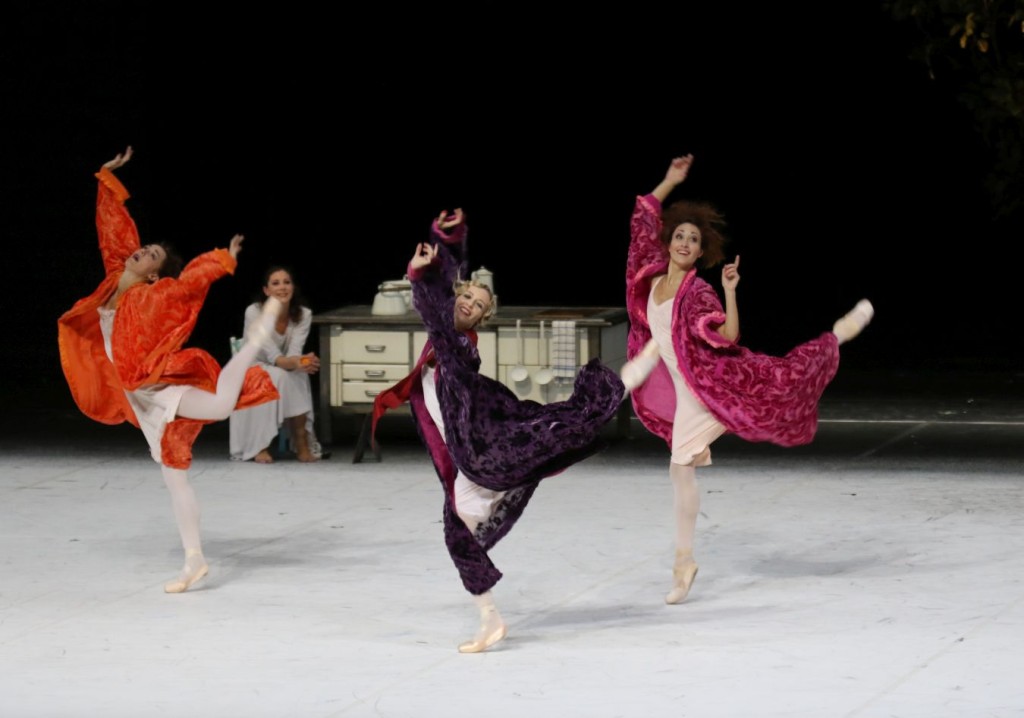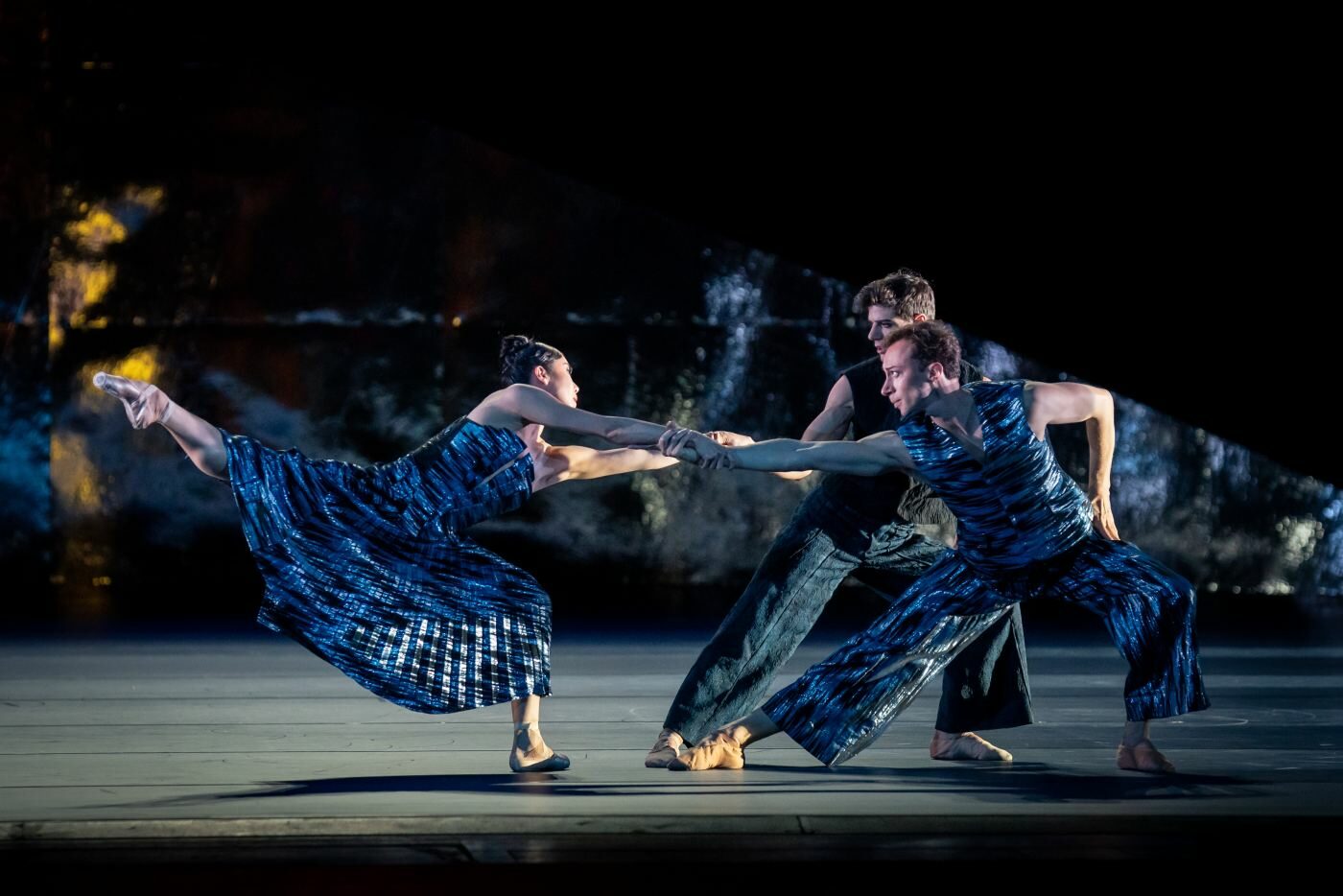Not Exactly a Happy Love Affair
“A Cinderella Story”
Hamburg Ballet – John Neumeier
Hamburg State Opera
Hamburg, Germany
October 23, 2015
by Ilona Landgraf
Copyright © 2015 by Ilona Landgraf
 Indeed Cinderella gets golden shoes to dance in at the royal ball, but unlike in the Brothers Grimm’s or Charles Perrault’s fairy tale they are not the key element of John Neumeier’s “A Cinderella Story”. The 1992 production has been revived earlier this season. It is a version mainly referring to the Brothers Grimm text but also includes a few details from Perrault. Yet above all it is Neumeier’s own interpretation, his perspective on the story.
Indeed Cinderella gets golden shoes to dance in at the royal ball, but unlike in the Brothers Grimm’s or Charles Perrault’s fairy tale they are not the key element of John Neumeier’s “A Cinderella Story”. The 1992 production has been revived earlier this season. It is a version mainly referring to the Brothers Grimm text but also includes a few details from Perrault. Yet above all it is Neumeier’s own interpretation, his perspective on the story.
Neumeier avoided the bloody cruelties one finds in the written sources. The mean stepsisters neither chop off their toes or heels to fit into Cinderella’s shoes, nor are their eyes picked out as a punishment at the end. Instead Neumeier added a heavy dose of humor and exaggerated most characters with stark cliches, yet also allowed character traits to surface which put another complexion on some figures. (more…)




